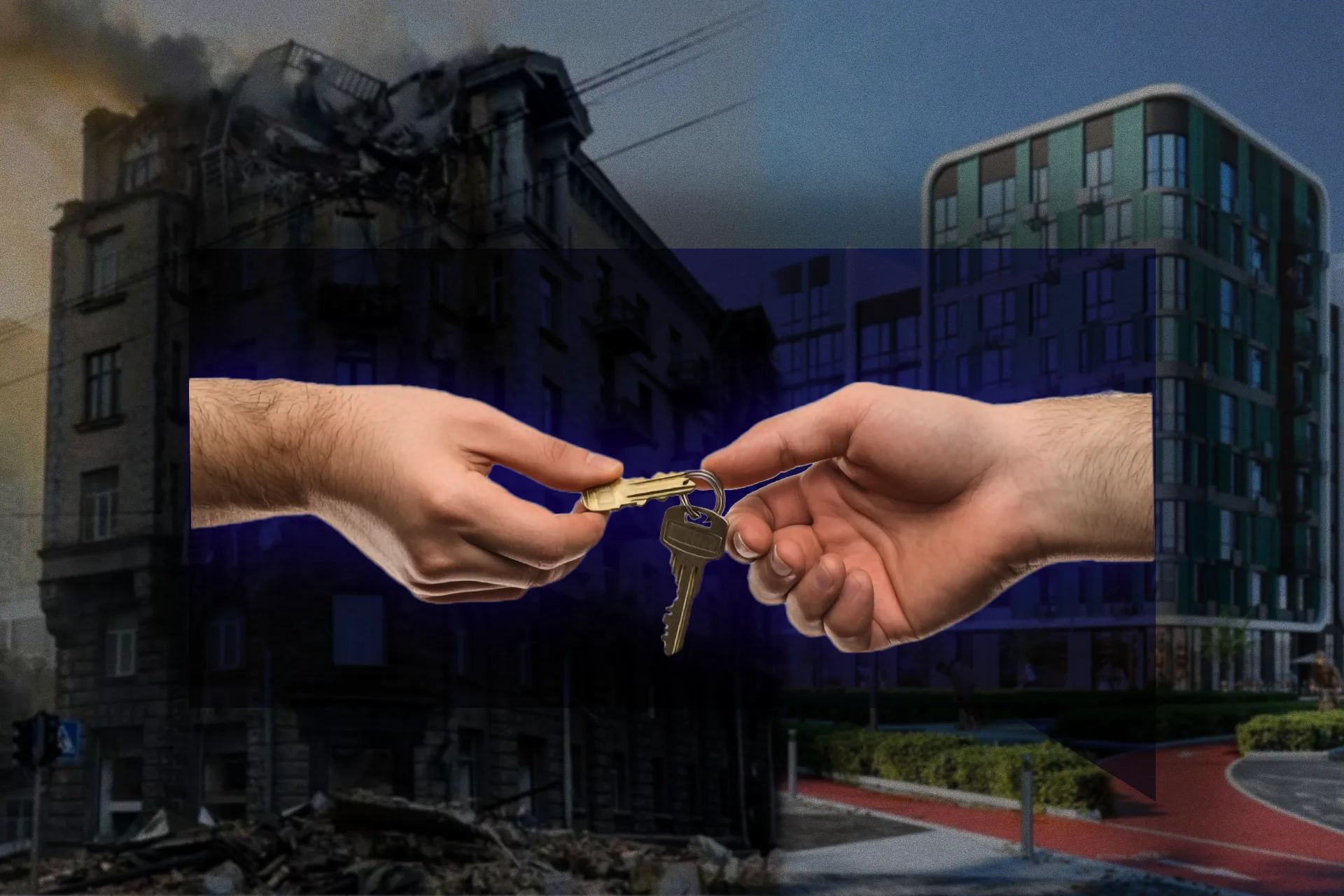During the war, housing has become not only a basic necessity but also a strategic resource for millions of Ukrainians. Demand for real estate in Kyiv is growing, particularly among internally displaced persons, while government programmes that should be supporting citizens are increasingly focused on the interests of developers.
We spoke with Larisa Stavynoga, president of the Ukrainian Real Estate Professionals Association, about why the housing market in the capital is currently “freezing” after every shelling, how the terms of the eOselya programme have changed, who is buying apartments, and why renting has become the main alternative.

Read also: Government approves draft law on new housing policy
Current market situation: what is happening?
– Let’s start with the main thing — what are the current trends in the housing market in Kyiv?
– Thank you for the invitation. The situation on the market is complicated, the market is difficult. We are currently seeing a certain decline in activity, and this is due to several factors. First, due to the reduction in state funding — state programmes are either being curtailed or are operating with delays. In particular, this concerns the preferential mortgage programme eOselya. Secondly, the situation on the front line: after each massive shelling, the market literally “freezes” for a week or two. People postpone their purchase decisions because they are uncertain about the future.
The impact of IDPs: who is buying housing today?
– Who is currently driving demand in the Kyiv market?
– To a large extent, people from Kharkiv, Sumy, and frontline regions are actively looking for housing in Kyiv. They sell their property in their hometowns and buy here — mostly inexpensive housing: Khrushchev-era buildings, guesthouses, and one-room apartments. The main segment is between 30,000 and 70,000 dollars. This is not a luxury, but a basic need — to have a roof over one’s head.
Read also: First IDP family to receive rental subsidy
Government programmes: support or barrier?
– Does the state programme eOselya have a significant impact on the market?
– Unfortunately, the situation with eOselya has deteriorated. Previously, the programme really helped — in 2023–2024, it significantly revitalised the market. But since the end of 2024, its conditions have changed: now it does not actually work for the secondary market, only for the primary market. And the primary market, in turn, has its own problems — labour shortages, construction delays, high prices. People are forced to buy property rights and take on financial obligations without any guarantees as to when they will be able to move in. So I have to say that this programme is now more focused on developers than on buyers. In Kyiv, there is almost no housing left that meets the programme’s requirements. The supply is extremely limited, and prices there are enormous. Such properties were almost sold out back in 2022–2023. There are no new arrivals because construction has slowed down. And access to the programme does not solve the problems of developers, who have plenty of them. The secondary market could have been a lifeline, but it has been effectively “washed out” of the programme. So, in fact, the programme does not affect the primary market and does not support the secondary market. As a result, it does not work as intended.
Read also: Implementation of the project to improve housing conditions for IDPs continues
Prices: how much has housing risen in price?
– What are the current prices for housing in Kyiv?
– In the primary market, especially for properties covered by the “eOselya” programme, prices have risen to $2,200–2,500 per square metre. This is almost twice as much as in the secondary market, where prices remain at $800–1,000. This raises the question: how is a house built in 2005 worse than a new building that has not yet been commissioned? In fact, this is artificial regulation and restriction of access to the secondary market.
The rental market: an alternative to buying?
– What about rentals? Is demand increasing?
– Yes, the rental market is very active. Prices have risen significantly. A one-room Khrushchev-era apartment now costs 13,000 hryvnia, and a new building can cost up to 20,000. This is quite an alarming sign: people are not ready to invest in buying because they are unsure of stability. They choose mobility: they rent so that they can quickly change their place of residence in case of danger.
Conclusion: what needs to be changed?
– What do you think needs to be changed to make the market more vibrant?
– Support needs to be returned to the people, not just to developers. Programmes should be social, not lobbyist. The state should think about those who work for it — the military, doctors, teachers. Otherwise, we will end up with stagnation instead of development. The market cannot exist without trust and accessibility.
Read also: Ministry of Social Policy introduces new “Warm Winter” payment for vulnerable families



